Needles are important when sewing. In fact, they might be the most important choice you will make when sewing.
If you get it wrong, it can cause hours of frustration, jams and other headaches.
Here are the most common needle types and what fabrics are best to be sewn with it.
Universal Needle
The universal needle is the easiest to find and most common needle. Well, common in sewing stores. Not necessarily in my sewing supply stash. More on that later.
The universal needle will sew many fabrics. Quilting cotton, suiting, shirting, woven fashion fabrics, lighter upholstery fabrics, and stable knits like fleece and t-shirt jerseys.
It’s a good go-to needle when you’re sewing. But it’s not the ideal needle for many fabrics.
Microtex
The microtex needle has a sharper point on it than the universal needle. This needle is my go-to needle for sewing light weight, slippery fabrics like chiffon and charmeuse satin. I prefer it for satin fabrics that could be more marred by the needle passing through it.
I also use this needle for denser fabrics like a super dense upholstery weight faux suede. I find it can get through the dense weave easier.
I find myself using a size 10 Microtex needle often.
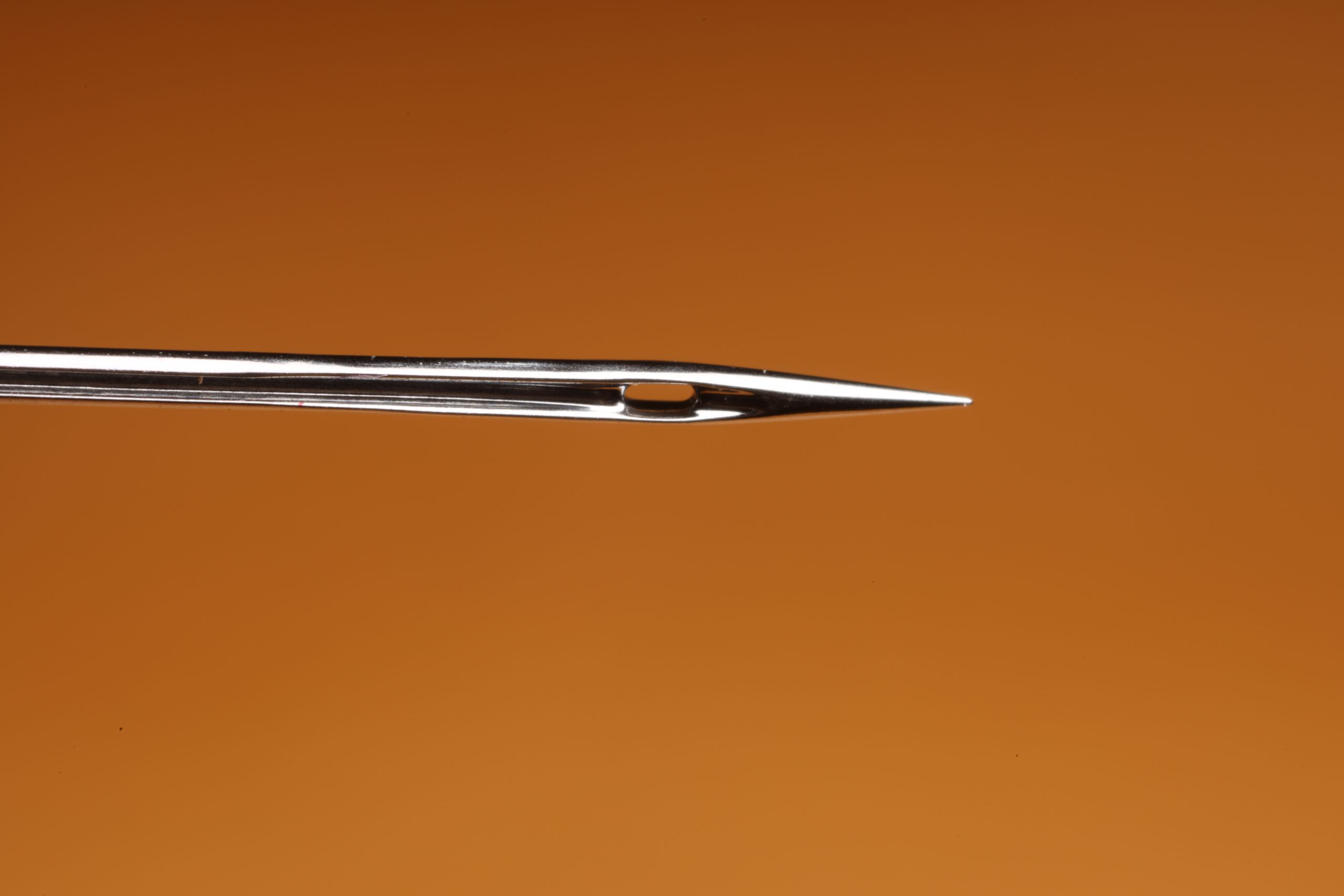
Universal Machine Needle
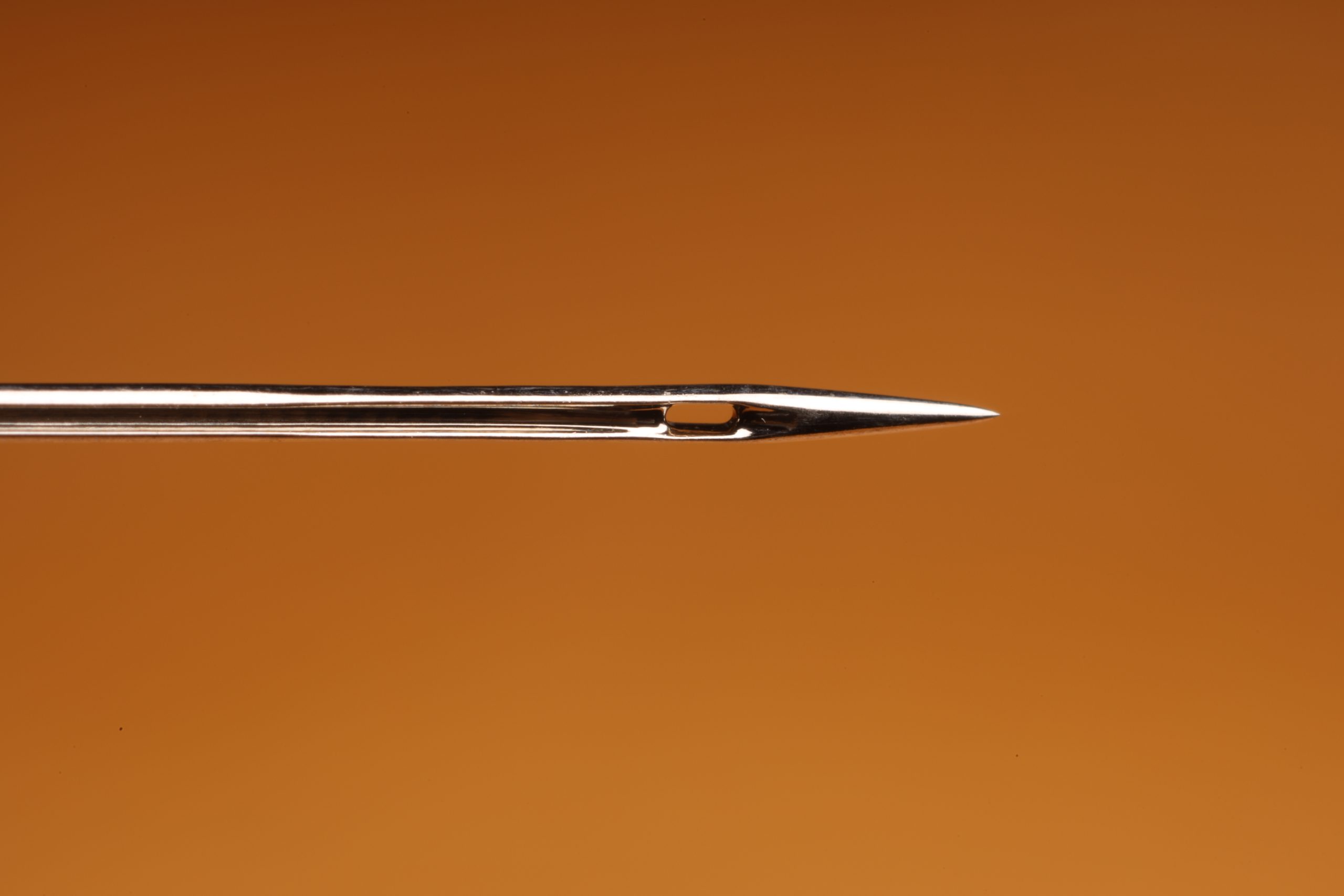
Microtex Machine Needle
Jersey/Ball Point
The jersey needle is a ball point needle good for many knit fabrics. Instead of a point that pierces through the weave of a fabric, the more rounded ball point is supposed to pass between the loops of a knit easier.
I’d use this needle for stable knits like t-shirt jersey, fleece, and other loose or less-dense knits like sweater knits, waffle knits and thermal knits.
However, there are some knit fabrics I find need even more oomph to sew without issues.
Stretch
Enter the stretch needle.
This needle, like the jersey needle is made for knits. BUT it’s got a slightly different shape that works really well for dense knits and especially for knits with added spandex or elastane fibers.
So, fabrics like swimsuit spandex, stretch velvet, cotton/spandex blend jerseys and many activewear fabrics for athletic apparel benefit from the use of a stretch needle.
I also find that sewing elastic works better with a stretch needle.
And sometimes, when I’m sewing a woven fabric with a lycra or spandex fiber component (making it stretch), I switch to a stretch needle.
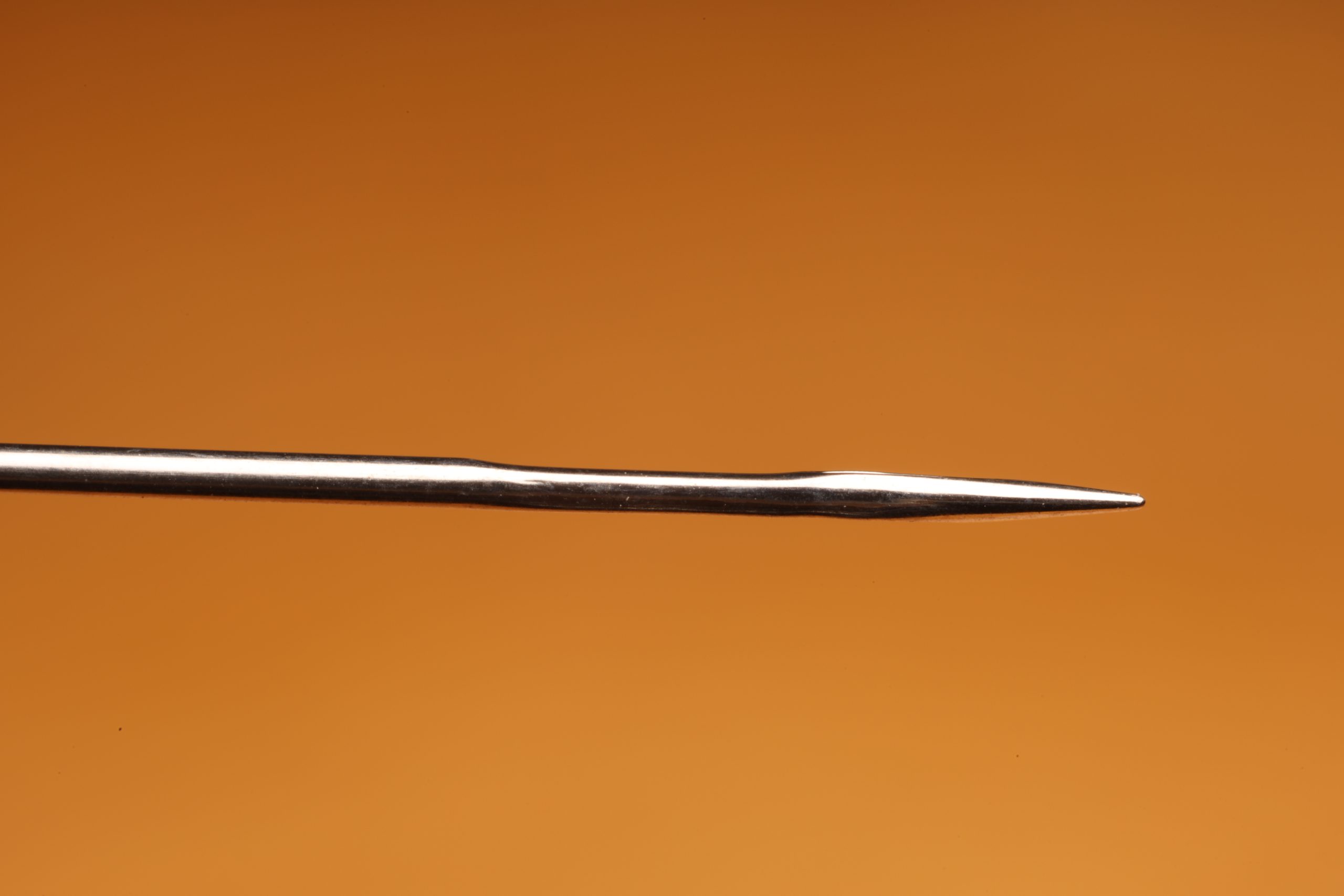
Ball Point/Jersey Machine Needle
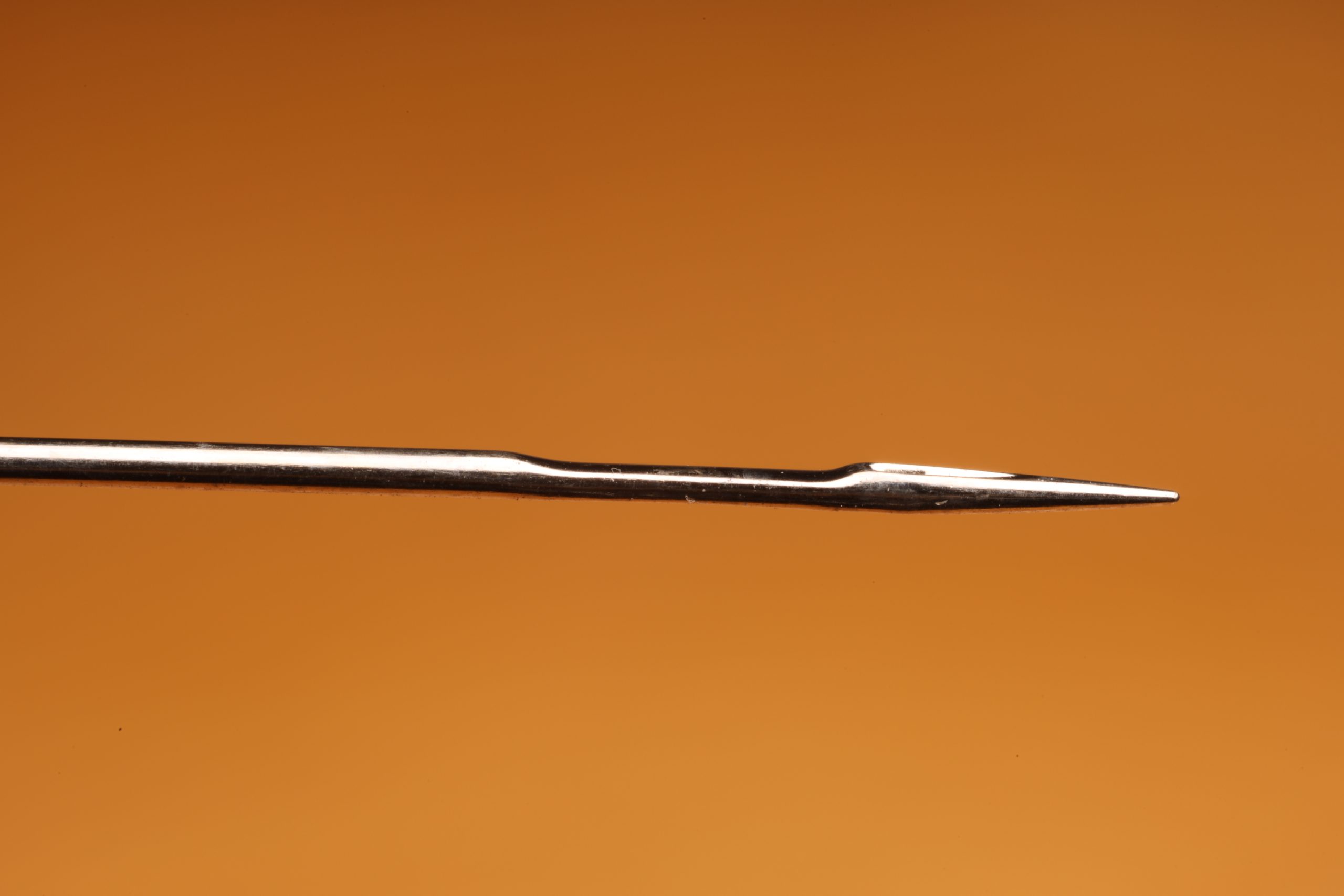
Stretch Machine Needle
Denim
The denim needle is a needle with a sharper, longer tapered point needle. It’s not only used for denim, but it is the preferred needle for sewing pant-weight denim.
It can be used for pant-weight twill, corduroy, upholstery twill, drapery fabric or any fabric that has a medium to higher density and heavier weight.
The shape of the point makes it better for piercing through many layers of thick or heavy weight fabric.
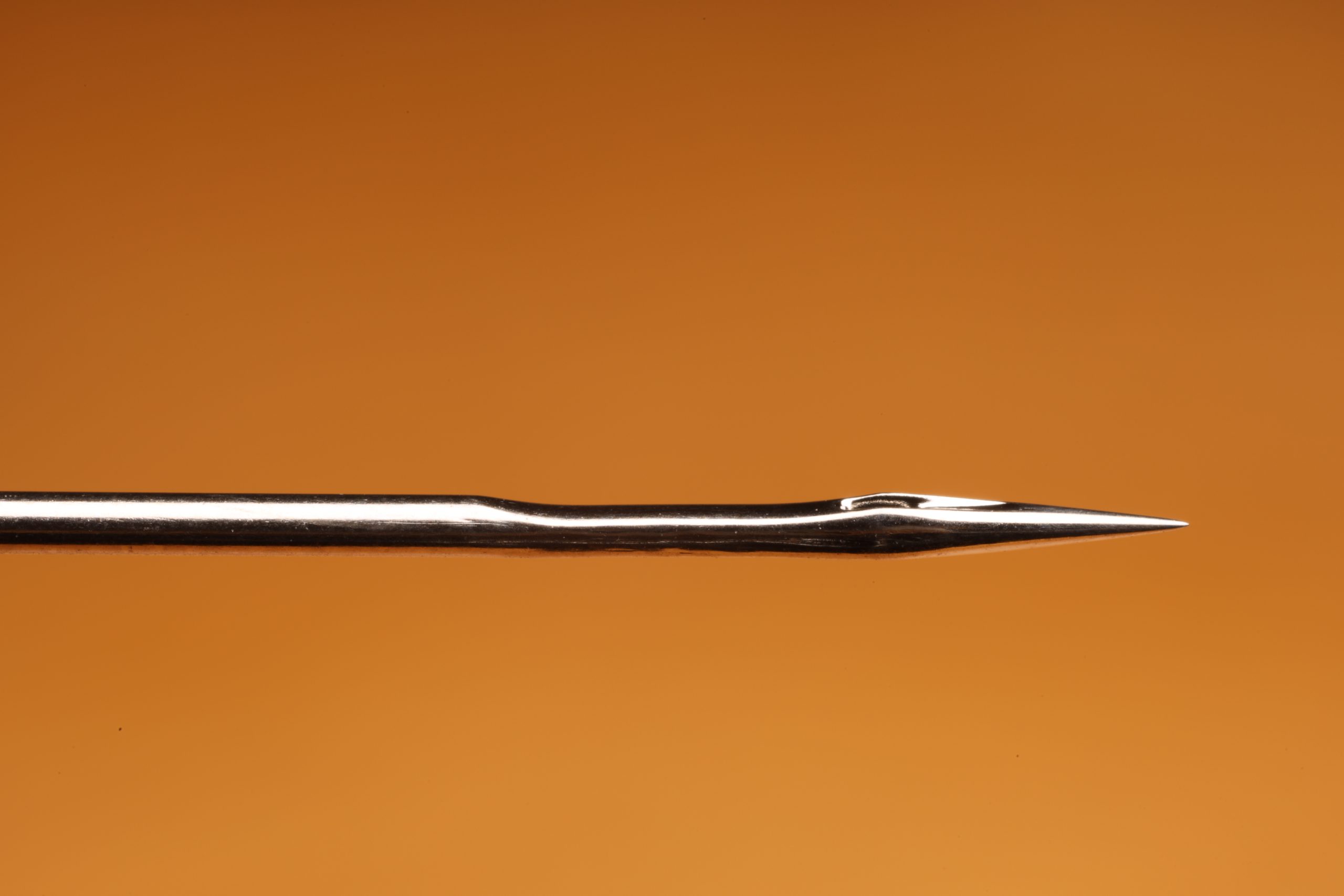
Denim Machine Needle
Leather
A leather needle is made for piercing leather. The point is really tapered, and almost wedge shaped.
This needle can also be used for faux leather and multiple layers of a dense heavyweight fabric.
I think of the leather needle as the more intense cousin of the denim needle.
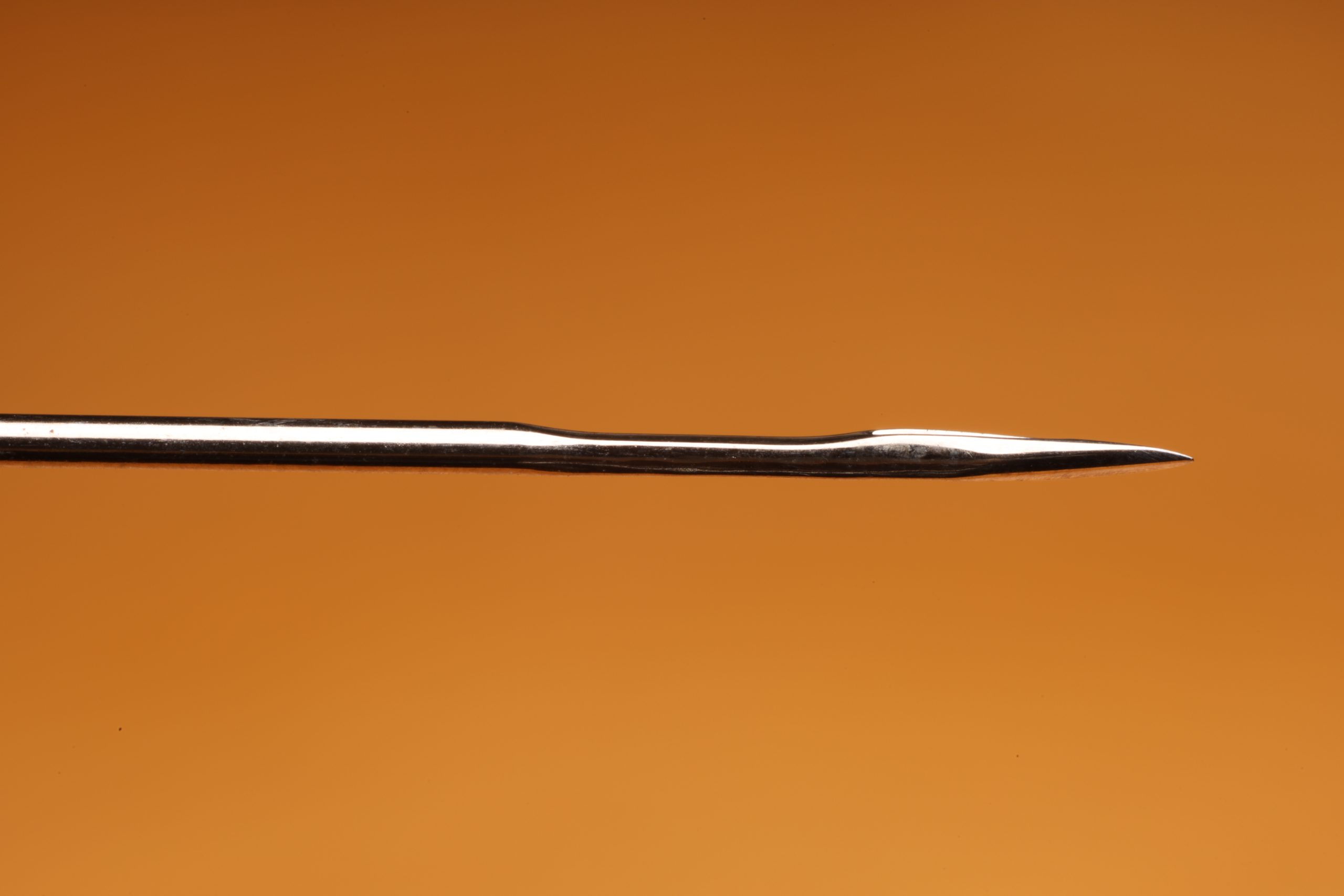
Leather Machine Needle
Needle Type Matters
Getting the type of needle right for your fabric matters.
Often jams can be avoided with the right type of needle.
Also, getting the type right can avoid marring the surface of many fabrics.
If you are experiencing issues with jamming, poorly formed stitches, or surface marring, try a different needle type.
You can also play with the size of the needle. Learn more about choosing needle sizes in my article “Needle Sizes: Considerations for Choosing”.
And as always, a new undamaged needle will behave better and give better results than a worn out or damaged needle. The wear or damage is not always visible to the naked eye.
